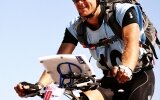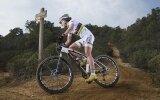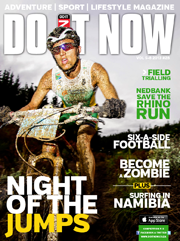- Magazine
- #readityourway
- Weekly Stories
- #shareyourstory
-
Adventure
- Abroad Travelling
- Africa Travelling
- Events
- Expos & Shows
- Festivals
- Fishing
- Free Diving
- Gliding
- Horse Riding
- Inspiring People
- Islands Travelling
- Kite/Windsurfing
- Motorbiking
- Motorised Water Sports
- Mountaineering
- Mountain Biking
- Off-road 4x4
- Off-road Motorbiking
- Paddling
- Performance Driving
- Photography
- Rock Climbing
- Rollerblading
- Sailing
- Scuba Diving
- Skateboarding
- Skydiving
- Snowboarding & Skiing
- Surfing
- Swimming
- Trail Running
- Wakeboarding
- Waveski Surfing
-
Sport
- Adventure Racing
- Fishing
- Free Diving
- Gliding
- Health & Fitness
- Horse Riding
- Inspiring People
- Kite/Windsurfing
- MMA
- Motorbiking
- Mountain Biking
- Multi-sport
- Off-road 4x4
- Off-road Motorbiking
- Paddling
- Performance Driving
- Photography
- Road Cycling
- Road Running
- Rock Climbing
- Rollerblading
- Sailing
- Scuba Diving
- Skateboarding
- Skydiving
- Snowboarding & Skiing
- Surfing
- Swimming
- Rugby
- Trail Running
- Triathlon
- Wakeboarding
- Waveski Surfing
- Lifestyle
- Calendar
Two Scotts on the Trott
Words: Catherine Scott | Photos: Catherine & Andrew Scott
Topic:
Mountain Biking
In my world of wild storms and vast skies, speeding dizzily down mountain passes, sleeping on the backs of trucks and talking to countless strangers, daily living was unpredictable and reactionary. Sitting now on a chair, at a table in a house surrounded by millions of other houses, life on a bicycle seems far and removed.

Having travelled through Argentina, Paraguay and Chile, and covered a distance of roughly 7,000 km (a little less than half cycled) in two-and-a-half months with my brother, Andrew, the last month and a half of our journey had a different focus. Our time was not spent cycling long distances on endless stretches of road. Instead, the cycling became somewhat secondary and more time was spent rock climbing. However, the spirit of adventure was still rife.
The initial plan for our four months in South America was a rock-climbing holiday, so the prospect of spending some time on rock was hugely exciting. Our thirst for climbing had been wet whilst in Córdoba when some local climbers had invited us into their homes and taken us out climbing to some of the best crags in the province. Having done no climbing in Chile and then making an exhausting second Andean crossing, we were more than ready to park our bikes for a while.
Despite the lower altitude of the crossing from Osorno, in Chile, to Villa La Angostura, in Argentina, the ascent took place over significantly fewer kilometres than the first. The hills were steeper and wound in tight coils up through the rapidly changing landscape. It was like cycling through a year’s seasons in three days. The bright, boundless, green springtime fields gave way to bizarre summer forests with towering trees, bamboo and tropical shrubs. Then autumn came. Ash covered the ground like snow; the trees stood stark, burnt reminders of the lush landscape before the volcanic eruption. Grey. Suddenly, we were in winter. The rain started, icy, icy driving rain that burnt our faces and froze our tired muscles that begged for rest. Snow covered the ash that covered the ground. Slowly, we crept up and over. Then, once at the top, we whizzed through springtime forests and past turquoise mountain lakes towards Villa La Angostura.
Next stop: Bariloche. En route we managed to break our speed record (new top speed was 68,9km/h) and we were two exhilarated and exhausted individuals when we erected our tent on the outskirts of this picturesque town. Bariloche is home to some of Argentina’s best rock climbing and we were eager to use our hands and feet to climb mountains instead of only our legs. With a little investigation, we discovered some crags and local climbers. A few hours later, we were offered a home to stay in for as long as we needed. For just short of two weeks, we explored Bariloche and the surrounding area. We sampled the rock and chocolate. Both are incredible and complementary, and we could have happily stayed on. However, the clock was ticking and a festival of rock climbing was waiting for us, just three hundred kilometres south.
One of the things we had discovered after arriving in Argentina was that the Petzl RocTrip 2012 was going to happen in the middle of November in a place called Piedra Parada, near Esquel in Patagonia. Our understanding of what the RocTrip entailed was minimal. We had watched films of RocTrips that had taken place a few years earlier and knew that the gathering happens every year in a different country. We knew that the objective was to develop a new and incredible rock climbing location and ‘put it on the map’. We knew enough to make us plan our trip so that we would be in Piedra Parada by mid November.
So we packed up our bags and bikes and cycled out of Bariloche along lakes and through the surrounding hills. It felt good to be ‘in the saddle’ again. The Patagonian landscape was resplendent in its springtime glory. Our legs were strong and well rested, and we covered the distances easily.
Between Bariloche and Piedra Parada, our days were happy and our nights were too. We found magical, free camping spots, as well as some sterling families who invited us in for the night. The anticipation was building and erupted in a series of whoops when we finally cycled up to the mighty standing rock; the Piedra Parada.
RocTrip was an unrivalled highlight of the trip. It was a concoction of incredible like-minded people from around the world, a whole canyon of fantastic routes to climb, a river to swim and bath in, a variety of formal and informal live music to listen to, an asado (Argentine braai) bigger than we could ever have imagined and ten days of uninterrupted fun. There were, of course, the time-old elements to contend with: wind that bit through five layers of clothing and fine volcanic powder dust that made its way into everything and everywhere. But we were happy, dirty but happy.
At the end of November, we sadly shook out our belongings, packed up our sand-crusted tent and headed to Esquel to visit a family that had taken us in before the RocTrip. During our stay, they showed us the nature reserves and lakes that surrounded their pretty town.

On 5 December, with 10 days to go before Andrew was due to fly out of Argentina, we mounted our bikes once more and cycled out of town. We were 2,000 km from Buenos Aires and it was time for a hitch-hike marathon. This turned out to be a fascinating experience. We caught 11 lifts over five days. Thankfully, there was only one occasion where we thought we were going to die, and this was on the back of a tiny pickup that developed a terrifying speed wobble when the driver exceeded 80 km per hour. Needless to say, we hopped off that lift earlier than planned, valuing life over distance covered.
Another noteworthy incident on our return journey took place in Tandil, in the southwest of Buenos Aires Province. We stopped in this handsome little town to investigate its reputable cheese and salami and by chance found ourselves camped in the midst of a moto-encuentro (motorbike meeting) of some 2,000 bikers. The bikers took a shining to us and complimented our ‘equipment’, despite the fact that we did not have engines to rev. In spite of their festiveness and friendliness, we were not sad to leave this leather-clad campsite.
We had managed to hitch-hike 1,700 km and were not looking forward to trying to cycle through the expansive urban sprawl that surrounded Buenos Aires. We made a decision that would ensure we arrived in the centre of the city safely. We hopped on a train. And that was it, the final leg of our journey.
Reflecting on the trip now, from the confines of a tiled and tiny house, is odd. For four months, our ‘dirt bag’ life was total. Normality was sleeping on a thin camping mattress. Washing clothes was an arduous task: we had to hand wash in buckets, public basins or rivers and then string up a temporary line and hope for no wind. Food was prepared in one or two small pots on a single gas stove. Coffee was simply grinds and water in a fold-up rubber cup. Being clean was always just a relative term, based on the amount of water we could carry and therefore afford to use for a bottle shower. Daily life was slowly experiencing the country one-on-one, breathing in our surroundings.
Our learnings along the way have been multitudinous. From basic tangibles, like how to change a tyre and prepare rice and lentils in a hundred different ways, to more immaterial realisations like self-control, anger management on windy days and how to simply accept our situation rather than feel dismal about uncomfortable circumstances. One of the key realisations was that anyone could ride a bicycle across a continent. Before this trip, I did not even own a bicycle. I did not know how to fix a puncture. I had no clue what a derailleur was or what type of brakes were best. Every bike shop or company I visited or phoned had different, conflicting advice. At the end of the day, I opted for economy and bought a basic bicycle. It was a little heavy, perhaps, but besides the occasions when we were lifting our bikes over fences, it was perfect.
On top of that, we had not trained at all. One of the questions we were asked most frequently regarding the trip was how much we had physically prepared. There was the general expectation amongst those we met that we were experienced cyclists who had trained for months before venturing forth. We hadn’t. This response was always met with surprise. I went on a few short training rides before we departed, the last couple carrying a backpack with a few kilogrammes of sugar and beans. We went on one test cycle when our panniers arrived, to see how we handled the change in weight. When we began our trip, we were barely prepared and definitely not fit.
Furthermore, our research had been minimal. We had spoken to a few cyclist friends and sales people, and read a few blogs. From this, we were able to ascertain some vital information regarding what was necessary and what was not. What we discovered is that you do not need a fancy bike. However, we were thankful on a daily basis that we had invested in a good set of panniers. Loading and unloading our bikes every day was a pleasure.
For those inclined to try a similar journey, we would thoroughly recommend not planning a route too extensively. One of the best parts of our trips was the fact that we had no set plans and no real destinations. This opened us up to receiving uncountable experiences that we would never have been exposed to had we been following a strict plan. Likewise, and this was something we learnt along the way, by not planning and researching accommodation and our next day’s destination, we were pushed out of our comfort zones. We were forced to communicate with people to gain information that often led to many great conversations, offers and opportunities. We also gradually became comfortable with free camping and ultimately aimed to avoid campsites altogether. This really brought us into contact with the people of the land.
Cycling as a form of travel ultimately means that the going will be slow. When there were big distances between towns, we would have to camp somewhere along the way. Some mornings we would wake up on a gaucho path – a path used solely by the cowboys of the South American pampas - amongst thorn trees and cow dung; other days we would wake up surrounded by snow-capped mountains alongside a little stream that served as our water source, bath and hopefully source of food. Each day became a little challenge and therefore incredibly rewarding. It became essential to become attuned to the wind and weather, and to read the landscape. Our senses sharpened.
As well as learning about the places we went to, we learnt about the people of Argentina, Paraguay and Chile. Not the tour guides or the people selling bus tickets, but the people who had never met a foreigner before, let alone invited one to camp on their farm or sleep in their spare room. We came into contact with people from all walks of life and we were able to share a laugh with every one of them. We gained a wealth of experiences that we will remember and reminisce about for the rest of our lives.
Yes, spending every hour of every day with one person was not always easy and required extreme patience, tolerance and compromise. Yes, there were days where we wanted to tear each other’s hair out, but all in all, it would be difficult to find a more perfect travel companion.
I asked Andrew to jot down a few thoughts on the trip and what he said was that, “The trip gave me the adventure I have been wanting all my life.” I couldn’t agree with him more.
|
|
|
|
|
|
|
|
|
|
|
|
|
Issue:
Issue 25 May '13
Related content
|
|
|
|
|
|
|
|
|
|






